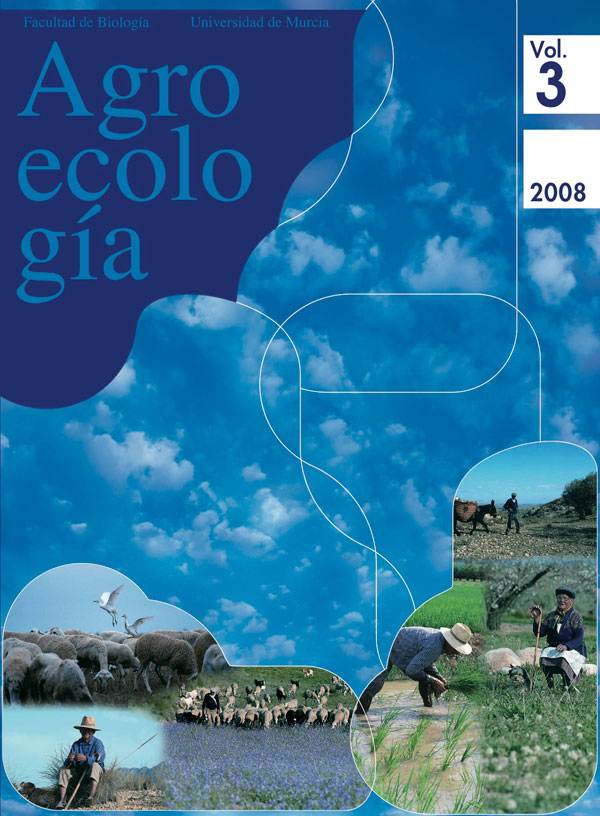Interesting techniques in barley breeding for drought and high temperature tolerance. I. Cell membranes stability
Abstract
In most areas of Spain, drought at the end of the barley growth cycle is common. The production of varieties better adapted to the reduced amount of water available at this time is therefore important; this is true for both traditional and ecological agricultural systems. The stability of the cell membrane is one of the most important selection indices for drought tolerance in cereals. The variability in this trait was examined in 14 barley genotypes, all raised in the field, by subjecting leaf samples to different temperatures and different concentrations of PEG. Very significant differences were seen between the genotypes (p<0.001). A temperature of 51ºC and a PEG concentration of 40% (p/v) were the best conditions for discerning these differences, achieving the best separation between genotypes while causing the least damage to the tissues.Downloads
Las obras que se publican en esta revista están sujetas a los siguientes términos:
1. El Servicio de Publicaciones de la Universidad de Murcia (la editorial) conserva los derechos patrimoniales (copyright) de las obras publicadas, y favorece y permite la reutilización de las mismas bajo la licencia de uso indicada en el punto 2.
2. Las obras se publican en la edición electrónica de la revista bajo una licencia Creative Commons Reconocimiento-NoComercial-SinObraDerivada 3.0 España (texto legal). Se pueden copiar, usar, difundir, transmitir y exponer públicamente, siempre que: i) se cite la autoría y la fuente original de su publicación (revista, editorial y URL de la obra); ii) no se usen para fines comerciales; iii) se mencione la existencia y especificaciones de esta licencia de uso.
3. Condiciones de auto-archivo. Se permite y se anima a los autores a difundir electrónicamente las versiones pre-print (versión antes de ser evaluada) y/o post-print (versión evaluada y aceptada para su publicación) de sus obras antes de su publicación, ya que favorece su circulación y difusión más temprana y con ello un posible aumento en su citación y alcance entre la comunidad académica. Color RoMEO: verde.





